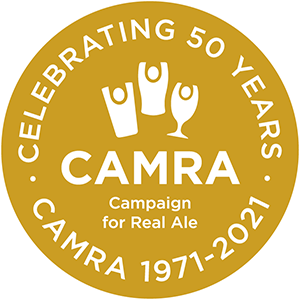Finding more pubs
Criteria for Inclusion
The focus is entirely on interiors and what is authentically old. The pub should retain a reasonable amount of genuinely historic internal fabric and/or sufficient of the layout for the historic plan-form to be appreciated and understood. The emphasis is on pre-1939 interiors, although post-war examples might occasionally be considered if they have particular merit / quality fittings. The interior should be little altered in the past 40 years.
Applying the Criteria
When considering a pub for inclusion in a Regional Inventory of Historic Pubs Interiors / Real Heritage Pub guide there are two aspects to look at: -
a) Historic plan. Is it largely intact? ** A two room pub that previously had 3 rooms could pass this part of the criteria.
b) Specific features. The greater the amount of original features like the bar counter, bar-back, wall-tiles, screens, original toilets and so on the better. If all that survives is a couple of fixed benches and a bit of match-board wall panelling in a largely opened up pub, then inclusion cannot be justified since they are very commonplace items found in large numbers. But add in a largely intact servery and only a slightly opened-up plan and it probably can be. A specific interesting feature or two might justify inclusion, but would have to be of real significance for inclusion of an otherwise wrecked interior.
** national inventory of historic pub interiors is the 'first division' of pub interiors those which are either wholly intact or contain features of outstanding historic or architectural importance.
Information required
As well as the name and address of the pub, it is so much more useful to have an idea of what to expect to find at the pub (i.e. number of rooms, same family for, say, 40 years, or other reason for suggesting it). We look forward to hearing from you with as much information as you are able to supply.
How can you help?
Do you know of a pub or pubs that are little changed, as far as the interior is concerned, in the past 40 years?
Do you know of pubs with old bar fittings? - Victorian; Inter-war, or even a 1960's estate pub that just happened to escape a refit (the latter 1960's examples are rarer than the others and more difficult to find)
Can you identify old pubs with a refit in the 1930s, 1950s or even the 1960s, which have few changes since?
Are you aware of a multi-roomed pub, particularly one with an old bar back or bar counter (or where the counter was only added in recent years as the pub did not previously have one)?
One of the most successful ways we have found in identifying good leads is to quiz locals, particularly if you are in a traditional pub. 'Can you help me I am looking for pubs in the area that haven't been modernised in recent years' is a good opening sentence. When they suggest names it is worth asking 'Has it got a separate bar and lounge or is it all one room?' as it is unlikely that we will be including a completely opened-up pub with only a single room (unless it has something stunning such as tiled walls or quality panelling as well as good bar fittings). Also, please ask when they last visited the pub as care is required if not in the past few years.
Ideally, documentary research will be carried out to establish as much reliable evidence as possible about the pub's history and evolution. We have produced A Note on Documentary Research which sets out how to do this.
Finally, on the Regional Inventory Reports you can see examples of pubs that have been inspected and either have been identified as 'Of Some Regional Interest' (e.g. a 'try also' entry) or 'Not Considered To Have Enough Old Fittings and/or Floor Plan To Be Included'.
Where to send the information?
Email us the details to info@pubheritage.camra.org.uk or write to Pub Heritage Group, CAMRA, 230 Hatfield Road, St Albans, AL1 4LW. Many thanks in anticipation of your help.
 Pub Heritage
Pub Heritage 